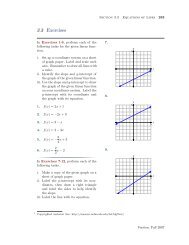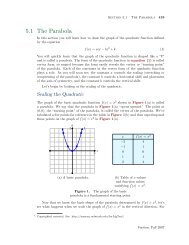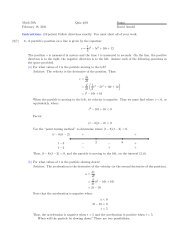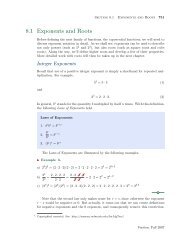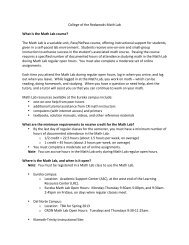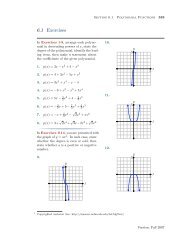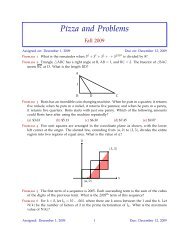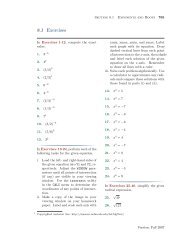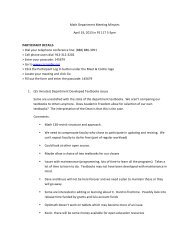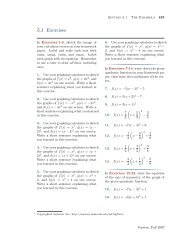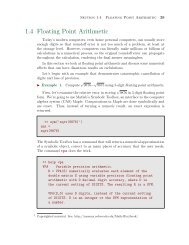Chapter 5: Exercises with Solutions
Chapter 5: Exercises with Solutions
Chapter 5: Exercises with Solutions
- No tags were found...
You also want an ePaper? Increase the reach of your titles
YUMPU automatically turns print PDFs into web optimized ePapers that Google loves.
Section 5.3Zeros of the QuadraticRead off the vertex as (h, k) = (−2, −16).through the vertex <strong>with</strong> equation x = −2.To find the x-intercepts algebraically, set y = 0 and factor.By the zero product property, either0 = x 2 + 4x − 12Solve these linear equations independently.So the x-intercepts are (−6, 0) and (2, 0).0 = (x + 6)(x − 2)x + 6 = 0 or x − 2 = 0.x = −6 or x = 2The axis of symmetry is a vertical lineLastly, to find the y-intercept, set x = 0 in the equation and solve for y:So the y-intercept is (0, −12).y = x 2 + 4x − 12y = 0 2 + 4(0) − 12y = −12Finally, put this all together to make the graph.y20 f(x)=(x+2) 2 −16x=−2(−6,0) (2,0)x10(−4,−12)(0,−12)(−2,−16)To find the domain of f, mentally project every point of the graph onto the x-axis, asshown on the left below. This covers the entire x-axis, so the domain= (−∞, ∞). Tofind the range, mentally project every point of the graph onto the y-axis, as shown onthe right below. The shaded interval on the y-axis is range= [−16, ∞).Version: Fall 2007



